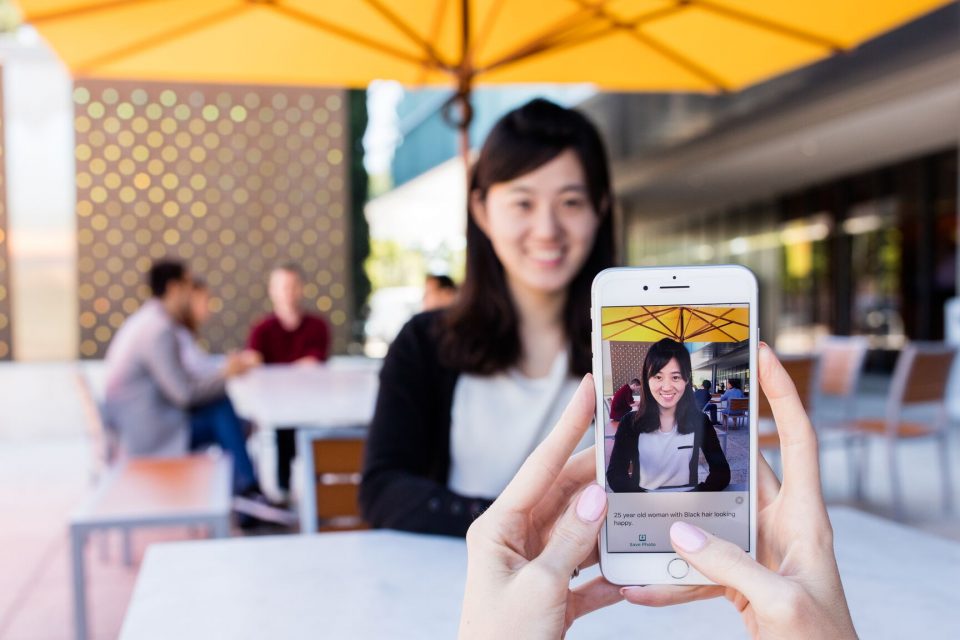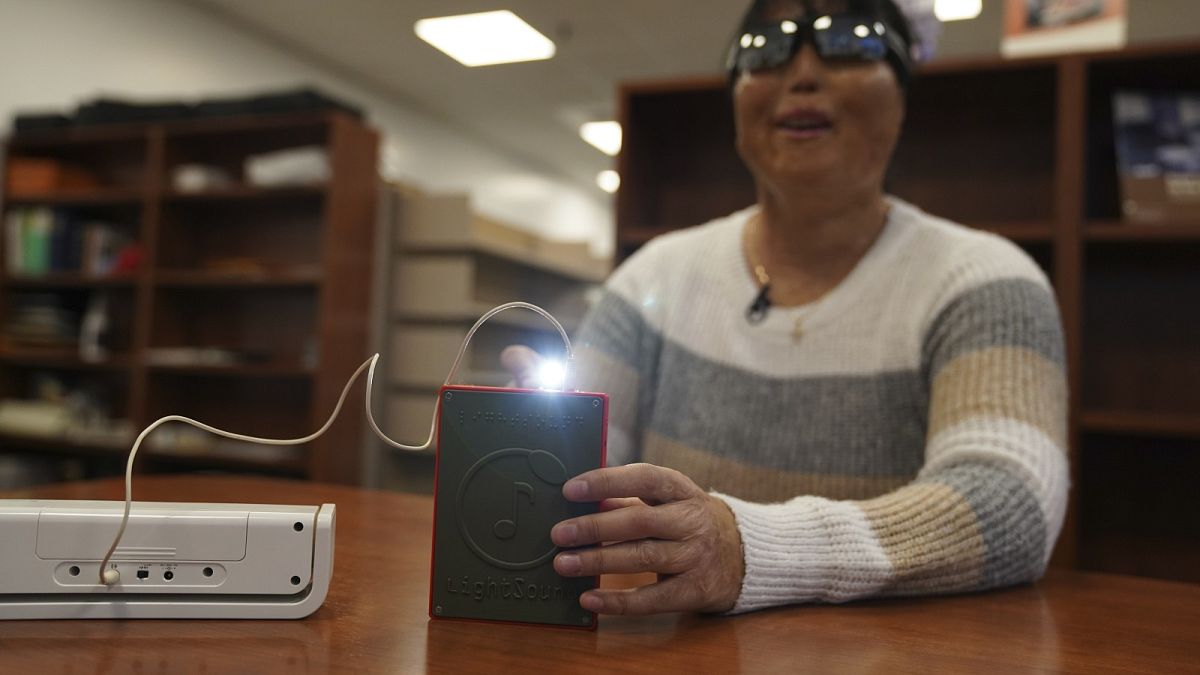Screen Readers for the Blind: Accessing Information Without Barriers
Screen Readers for the Blind: Accessing Information Without Barriers
Blog Article
Discover Ingenious Tools Created for the Visually Impaired
The development of innovative devices for the visually damaged represents a significant innovation in access and freedom. Technologies such as smart glasses with AI capacities and mobile applications designed to supply auditory descriptions are reshaping daily experiences for customers. Additionally, wearable tools that utilize haptic responses improve environmental awareness, while modern-day Braille innovations use brand-new methods to engage with message. As these devices continue to progress, their influence on the lives of those with aesthetic impairments elevates important concerns concerning the future of inclusivity and freedom in various facets of life. What lies ahead in this technological landscape?
Smart Glasses for Navigation

Smart glasses made for navigating are revolutionizing the method visually impaired individuals interact with their setting. These sophisticated tools utilize a mix of electronic camera innovation, synthetic knowledge, and auditory comments to provide real-time details regarding surroundings. By employing barrier detection systems, clever glasses can notify users to potential hazards, allowing safer wheelchair in both strange and familiar setups.
The integration of GPS modern technology further improves navigating capacities, enabling customers to receive acoustic instructions as they relocate. This hands-free approach not only fosters self-reliance but likewise encourages visually impaired individuals to navigate urban landscapes with boosted confidence. Additionally, many wise glasses are equipped with attributes that determine sites and road indications, supplying contextual information that improves the customer experience.
In addition, the development of these gadgets is continuously progressing, with companies functioning to boost the precision of item recognition and broaden the variety of navigational features. As clever glasses end up being extra cost effective and easily accessible, they hold the possible to dramatically transform day-to-day live for aesthetically damaged individuals. Eventually, these ingenious tools stand for a critical step towards inclusivity, offering boosted flexibility and a greater feeling of autonomy for people navigating the world around them.

Mobile Apps for Daily Living
Just how can mobile applications boost the lives of visually impaired individuals? Mobile applications are transforming the means aesthetically damaged users navigate their environments, take care of daily tasks, and accessibility info. These applications give vital assistance through different functionalities, fostering independence and enhancing lifestyle.
Several innovative mobile applications are designed specifically for everyday living. For example, apps like Be My Eyes link aesthetically impaired customers with sighted volunteers using video telephone calls, enabling them to get real-time help with tasks such as reviewing tags or browsing unknown areas. Seeing AI, developed by Microsoft, utilizes synthetic intelligence to explain environments, reviewed text, and determine things, successfully transforming a smart device right into a powerful tool for everyday support.
Additionally, navigating applications tailored for the aesthetically impaired, such as Aira and BlindSquare, supply audio-based instructions and environmental info, enabling customers to traverse their surroundings securely and confidently. Past navigating and prompt support, mobile applications also sustain organization and job administration, with features that aid users set reminders, produce order of business, and track consultations. In recap, mobile applications act as essential resources, encouraging visually damaged individuals to lead even more independent and satisfying lives.
Wearable Technologies for Aid
Empowerment with modern technology is progressively apparent in the realm of wearable tools developed to aid aesthetically impaired individuals. These cutting-edge devices integrate flawlessly into day-to-day life, enhancing navigation and offering essential comments to individuals. Wise glasses furnished with cams can identify faces and read message out loud, allowing customers to engage more confidently in professional and social setups.
An additional remarkable advancement is making use of haptic feedback systems in wearable devices. These systems utilize resonances or various other tactile signals to share details concerning the individual's setting, such as challenges or modifications in terrain, improving movement and safety and security. Wearable innovations likewise include wristbands that attach to mobile phones, informing individuals to notifications through refined resonances, thus enhancing connectivity without reliance on aesthetic signs.
As these innovations continue to evolve, they are not only boosting independence for visually impaired individuals yet additionally promoting over at this website a better feeling of incorporation in society. By connecting the gap in between challenges dealt with in daily living and the potential for autonomy, wearable innovations work as pivotal tools in the quest for equality and empowerment for those with aesthetic problems.
Sound Description Devices
Sound summary tools play a crucial duty in improving ease of access for aesthetically impaired individuals, offering them with the ability to involve with aesthetic media. Wearable technology for low vision. These devices provide narrated descriptions of vital visual components in films, tv shows, and live efficiencies, making certain that individuals can totally understand the context and feelings conveyed through visuals
Audio description can be incorporated into numerous systems, including streaming solutions, movie theater screenings, and live theater. Numerous popular streaming services now include audio summary as an availability feature, permitting audiences to select it easily. Along with mainstream media, specialized applications additionally exist, offering audio descriptions important site for art exhibits, galleries, and other social events.
The effectiveness of audio description depends upon the ability of the narrators, who must convey visual details succinctly without interfering with the initial audio. Developments in this area are also leading the means for more individualized experiences, where customers can change the level of detail and pacing according to their choices.
Braille Innovations and Devices
Braille developments and gadgets have actually considerably changed the method aesthetically damaged individuals interact with message and details. Modern improvements have actually led to the advancement of versatile tools that improve proficiency and independence among individuals.
Moreover, mobile Braille notetakers integrate standard Braille input with modern-day functionalities, assisting in note-taking, organizing, and file editing and enhancing on the move. Assistive technology for the blind. These portable devices often include text-to-speech capabilities, bridging the void between Braille and acoustic info
In addition, ingenious Braille printers have emerged, allowing customers to generate Braille labels, records, and educational materials efficiently. This accessibility fosters better participation in educational and specialist settings, eventually advertising inclusivity.
In addition, study right into smart Braille innovations remains to broaden. Instruments that integrate expert system are being checked out to give real-time navigation support and contextual details, enhancing the customer experience in varied setups. On see the whole, these developments reflect a dedication to encouraging aesthetically impaired individuals through technology, ensuring they can quickly access and engage with the globe around them.

Final Thought
The improvement of innovative tools for the aesthetically impaired substantially enhances self-reliance and high quality of life. These technologies not just foster higher inclusion however likewise advertise autonomy in day-to-day tasks, eventually adding to a more fair and easily accessible culture for aesthetically impaired people.
As wise glasses end up being a lot more accessible and economical, they hold the potential to substantially transform day-to-day life for visually damaged customers. Mobile applications are reinventing the method aesthetically impaired users browse their atmospheres, handle everyday jobs, and accessibility details. Apps like Be My Eyes link aesthetically damaged individuals with sighted volunteers via video calls, permitting them to obtain real-time assistance with tasks such as reading tags or navigating strange areas.Furthermore, navigation apps tailored for the aesthetically impaired, such as Aira and BlindSquare, provide audio-based instructions and ecological details, enabling customers to traverse their surroundings safely and with confidence.The innovation of ingenious devices for the visually damaged substantially improves independence and quality of life.
Report this page